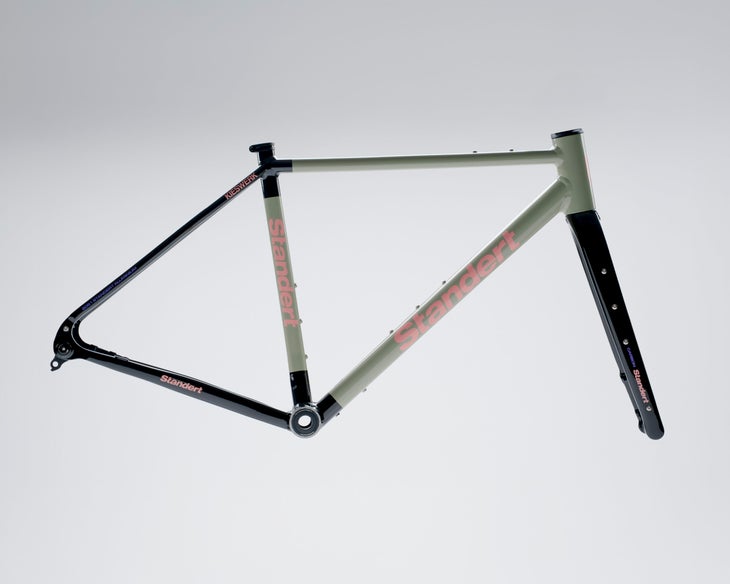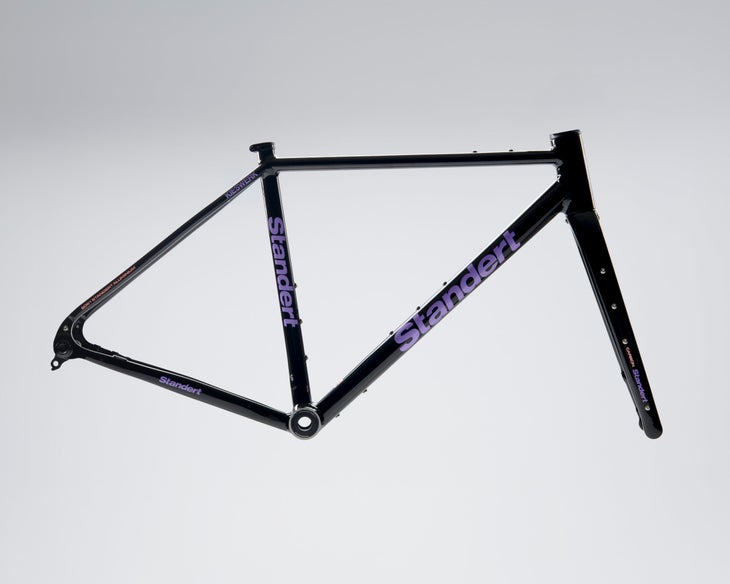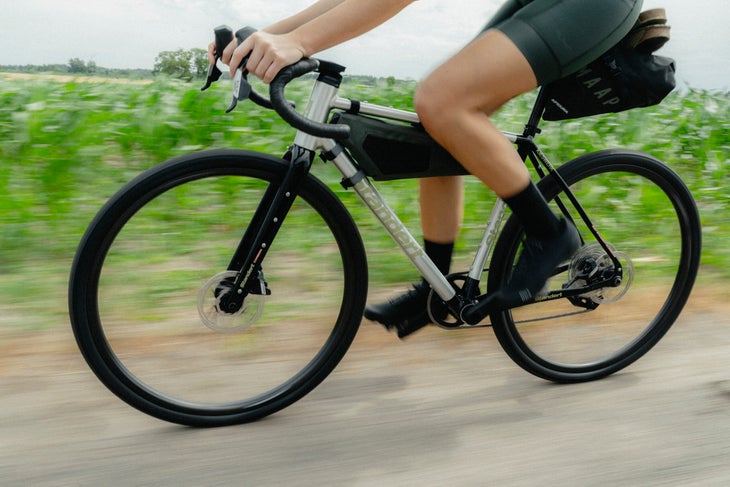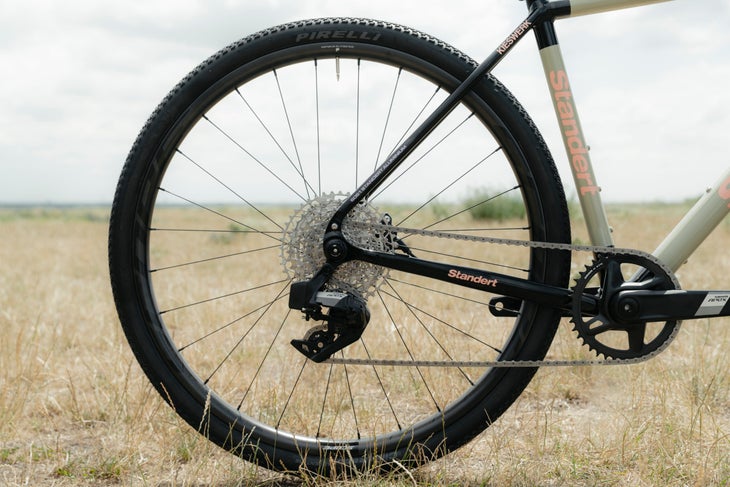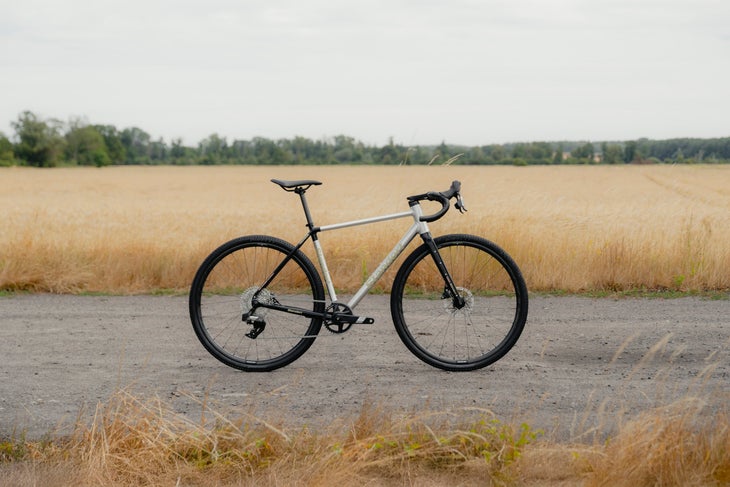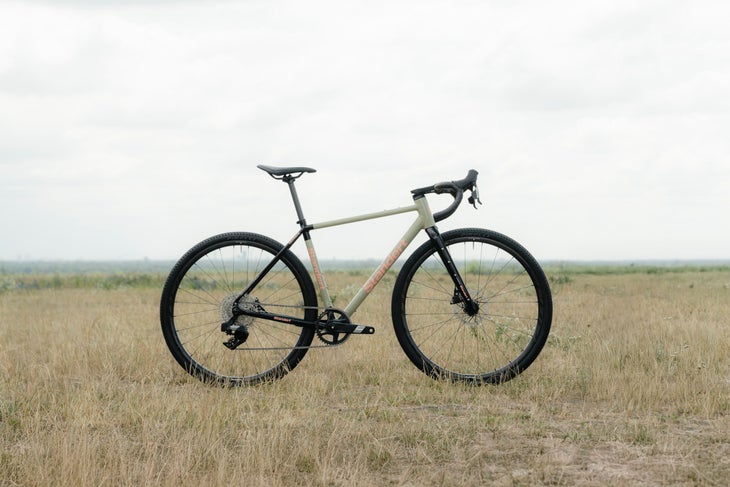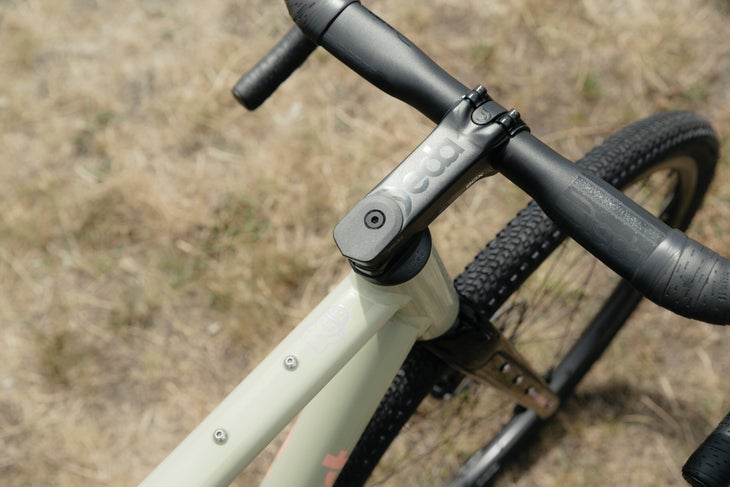“], “filter”: { “nextExceptions”: “img, blockquote, div”, “nextContainsExceptions”: “img, blockquote, a.btn, a.o-button”} }”>
Berlin’s boutique bike brand Standert has built its name on fast, photogenic steel and aluminum frames that channel European cool with serious performance chops. Whether it’s the race-ready Kreissäge RS or the playful Erdgeschoss, Standert has carved out a reputation for making distinctive bikes that don’t sacrifice substance for style.
Now, Standert turns its attention to the long-haul, all-road category with the release of the all-new Kieswerk, a versatile, full-aluminum gravel bike designed for everything from weekday commutes to multiday bikepacking expeditions.
Developed in and around Berlin, the Kieswerk slots into the “go-anywhere, do-anything” segment with a blend of smart engineering, future-proof standards, and wide-ranging capability.
Quick hits: Six things to know about the Standert Kieswerk
- The Standert Kieswerk is the brand’s new do-all aluminum gravel bike
- Features T47 threaded bottom bracket, SRAM UDH, and internal cable routing
- Max tire clearance: 700c x 50 mm (claimed, as measured)
- Sizes: seven sizes, 48 – 60 cm
- Pricing: starting at €2,449 (SRAM GRX RX600 complete build)
- For more: standert.de
Details
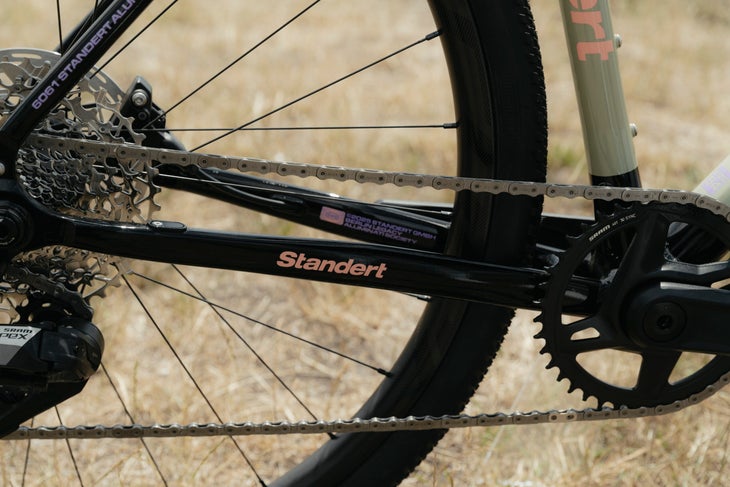
The Kieswerk – German for “gravel pit” – is rooted in Standert’s local terrain. Developed both on Berlin’s paved and unpaved roads and in the forests and trails outside the city, the Kieswerk reflects a practical yet playful approach to mixed-surface riding. It’s a departure from race-focused gravel frames or retro-inspired steel tourers, aiming instead for versatility above all.
At its heart is an aluminum frameset that embodies durability, sustainability, and lightness. The tubing is primarily made from recycled aluminum, a nod to environmental responsibility and product longevity. According to Standert, the frame is designed with “a small footprint and a big tire track,” reflecting both its minimal visual presence and its 50 mm tire clearance.
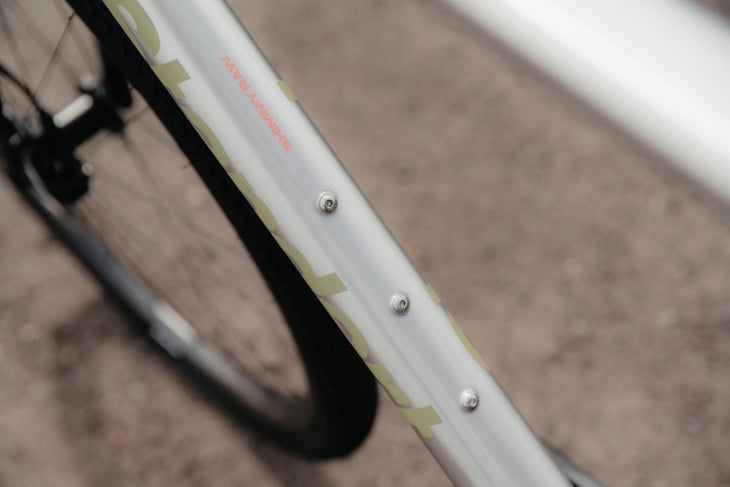
Aesthetically, the Kieswerk blends clean lines with function-first design. Fully internal cable routing is made possible through a wide T47 85.5mm bottom bracket shell and Token A-Box headset system. The result is a sleek look with modern standards for stiffness and ease of maintenance.
Functionality is baked into every element, per Standert. Whether you want to bolt on mudguards, racks, fork cages, or triple bottle cages, the Kieswerk is riddled with mounts to support bikepacking gear or winter commuting extras. Compatibility and durability are also addressed through the inclusion of SRAM’s Universal Derailleur Hanger (UDH) and a wide-range 1x drivetrain setup.
Geometry
| Size | 48 | 50 | 52 | 54 | 56 | 58 | 60 |
|---|---|---|---|---|---|---|---|
| Seattube C-T | 460 | 470 | 485 | 495 | 510 | 535 | 555 |
| Toptube | 512 | 525 | 541 | 556 | 570 | 583 | 599 |
| Seattube ° | 75.5 | 75 | 74.5 | 74 | 73.5 | 73.5 | 73.5 |
| Headtube | 100 | 110 | 125 | 135 | 150 | 175 | 195 |
| Headtube ° | 70.5 | 71 | 71.25 | 71.5 | 71.5 | 71.75 | 72 |
| Chainstay | 430 | 430 | 430 | 430 | 430 | 430 | 430 |
| BB Drop | 75 | 75 | 75 | 75 | 75 | 75 | 75 |
| Wheelbase | 1012 | 1017 | 1026 | 1034 | 1043 | 1054 | 1068 |
| Standover | 750 | 760 | 774 | 784 | 798 | 822 | 842 |
| Front Center | 594 | 598 | 608 | 615 | 625 | 635 | 649 |
| Stack | 526 | 537 | 552 | 563 | 577 | 601 | 621 |
| Reach | 376 | 381 | 388 | 394 | 399 | 405 | 415 |
| Handlebar | 38 | 38 | 38 | 38 | 40 | 42 | 42 |
| Stem | 90 | 90 | 90 | 100 | 100 | 110 | 110 |
| Crank | 165 | 165 | 170 | 170 | 170 | 172.5 | 172.5 |
While Standert says this is meant to be a bike for exploring, the geometry isn’t all that different from its racier gravel bike options, at least when comparing to its aluminum offerings such as the Kettensage.
Fit geometry in particular is the same as the existing Kettensage, at least in the small and mediium sizes. The three largest sizes get between 10 – 25 mm additional stack height, however.
Handling geometry, however, errs toward stability. Bottom bracket heights are lower at 75 mm, chainstay lengths have grown slightly to 430 mm, while trail figures are still roughly a hand-calculated 75 mm on the smallest sizes, and 69 mm on the largest sizes.
Overall, expect a sporty experience with the Standert Kieswerk. Standert says the bike is better made for exploration, but I think this makes for a good-looking all-rounder.
Builds, specs, and pricing
| Builds | Wheels | Frame weight (claimed) | Pricing (€) |
|---|---|---|---|
| Standert Kieswerk – SRAM Apex AXS | Scope R2.0 carbon | 9.2 kg/20.3 pounds (54 cm) | €3,249 |
| Standert Kieswerk – Shimano GRX RX600 | DT Swiss G1800 aluminium | 10.1 kg/22.3 pounds (54 cm) | €2,449 |
| Standert Kieswerk Frameset | NA | 1587 g (54 cm frame); 445 g (54 cm fork) | To come |
The Kieswerk will launch as a complete build only, available directly from Standert’s website starting July 31. Two build options are offered at release, each balancing reliability, performance, and affordability.
Both builds get a Deda gravel handlebar and stem system with fully internal cable routing, a Fizik Terra Argo X5 saddle, and Pirelli Cinturato Adventure 45 mm tires.
